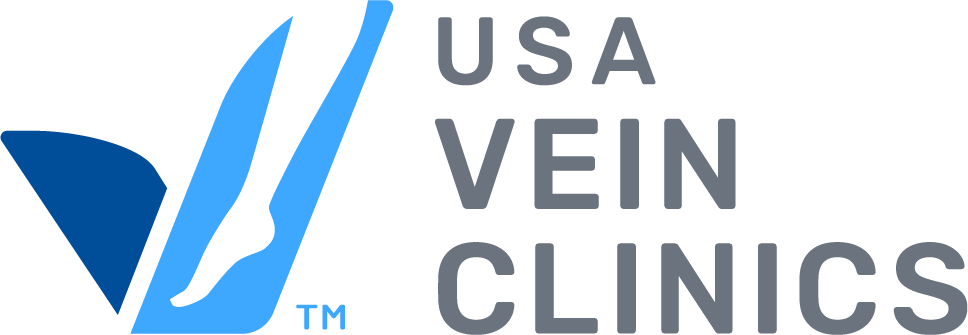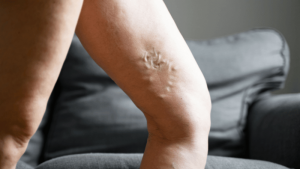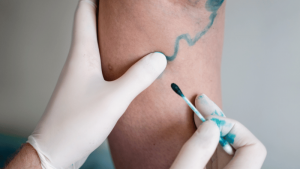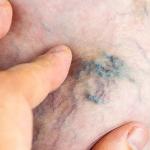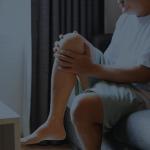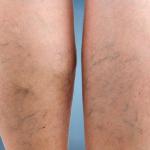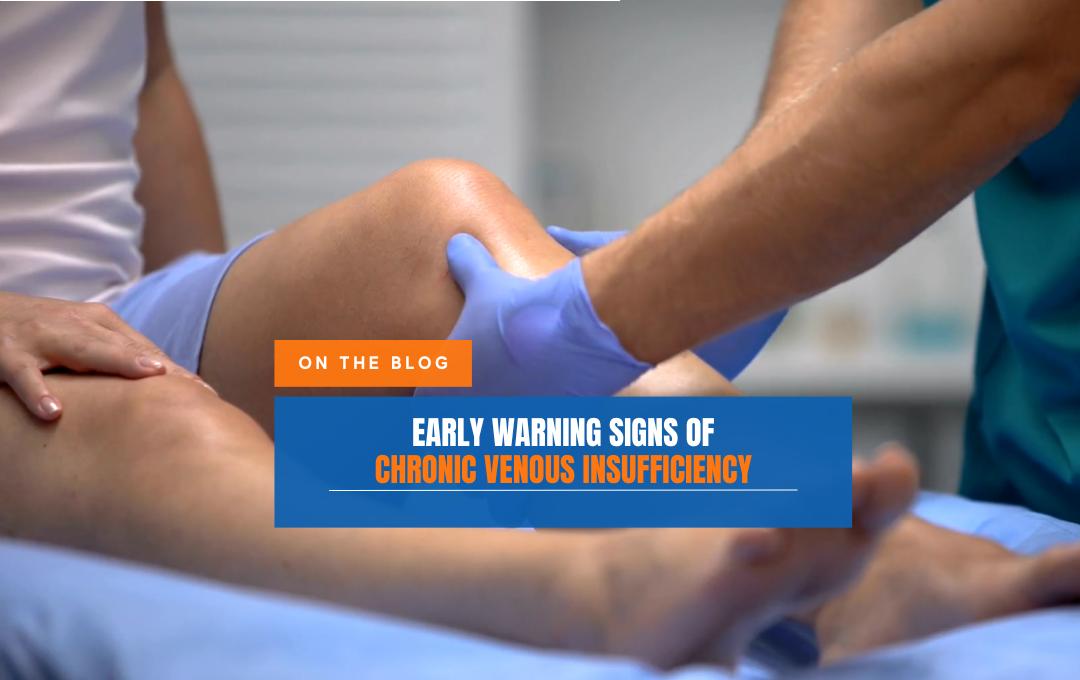
The first signs of chronic venous insufficiency, which causes varicose veins and spider veins, can be easy to miss. These early symptoms can be brushed aside and attributed to signs of aging. However, these symptoms shouldn’t be ignored because delaying treatment causes symptoms to worsen and lead to complications.
Identifying the early symptoms of chronic venous insufficiency and making an appointment for a vein screening is important for receiving effective treatment. Early treatment can help improve symptoms and prevent chronic venous insufficiency from worsening.
Check for Vein Disease Symptoms
What is Chronic Venous Insufficiency (CVI)?
Chronic venous insufficiency (CVI) is a health condition where the leg veins are damaged, resulting in poor circulation. This can cause blood to pool in the legs, leading to increased pressure in the veins and further vein damage.
Early Stages of Chronic Venous Insufficiency
Chronic venous insufficiency develops in stages. In the early stages, the condition causes mild symptoms and is often easier to treat. In later stages, symptoms can be more severe, and more intensive treatment might be required.
The early stages of chronic venous insufficiency include:
- Stage 0: There are no visible symptoms at this stage. However, some people in this stage experience symptoms such as leg tiredness or aching.
- Stage 1: Spider veins and other visible blood vessels can develop at this stage.
- Stage 2: Varicose veins of at least 3 mm wide develop.
- Stage 3: Leg swelling, also called edema, can develop.
In later stages of chronic venous insufficiency, additional symptoms, such as changes to skin color and texture, as well as ulcers, can develop.
Don’t wait for leg symptoms to worsen. Schedule a vein consultation at USA Vein Clinics today to take control of your vein health.
Learn More About Stages of CVI
Chronic Venous Insufficiency Symptoms
Treating chronic venous insufficiency in the early stages is the best way to prevent additional symptoms and reduce the risk of further complications. Treatment is key to condition management and helps reverse the signs and symptoms seen in the early stages.
Chronic venous insufficiency symptoms often include:
- A tingling or burning in the leg
- Leg cramps
- Leg pain while standing or walking is relieved when the legs are elevated
- The appearance of spider or varicose veins
- Swelling in the legs, ankles, or feet
- Skin discoloration
Early Signs of Chronic Venous Insufficiency
Chronic venous insufficiency often has subtle symptoms in its early stages. Awareness of these signs can help you address them before they become more severe.
Common early signs of chronic venous insufficiency include:
- A feeling of heaviness in the legs
- Cramping in the legs
- Aching sensations in the legs
- Itching or burning sensations in the legs
USA Vein Clinics provides comprehensive diagnosis and treatment for all stages of chronic venous insufficiency. Call 888.768.3467 or use our online scheduling tool below to make an appointment today.
Why Early Detection of Venous Insufficiency Matters
Untreated venous insufficiency can lead to more serious complications. This can include leg ulcers, blood clots, and a buildup of blood and fluid in the legs called venous stasis dermatitis. Recognizing the early signs of chronic venous insufficiency can allow for early treatment and symptom relief.
USA Vein Clinics offers a range of minimally invasive, office-based vein treatments. According to the American Heart Association, the treatment for chronic venous insufficiency in the early stages can prevent disease complications.¹
What is the Best Treatment for Early Venous Insufficiency?
Various treatment options are available for managing early venous insufficiency. Lifestyle changes such as regular exercise, wearing compression stockings, elevating the legs, and maintaining a healthy weight can help alleviate symptoms and slow disease progression. However, these methods primarily focus on symptom management and prevention rather than addressing the underlying issue.
Minimally invasive vein treatments are often the best option for more effective symptom relief. USA Vein Clinics specializes in state-of-the-art procedures designed to target and treat chronic venous insufficiency. Our minimally invasive treatment options include:
- Endovenous Laser Vein Treatment
- ClariVein®
- Visual sclerotherapy for spider veins
- Ultrasound-guided sclerotherapy
- Varithena
- VenaSeal™
- Radiofrequency Ablation
Visit a Vein Specialist at USA Vein Clinics
It’s important to consult a specialist if you notice symptoms of early venous insufficiency. USA Vein Clinics’ experts provide personalized diagnosis and treatment for early-stage chronic venous insufficiency. With locations nationwide and partnerships with most insurance providers, we make vein care accessible and convenient.
By choosing a minimally invasive treatment for chronic venous insufficiency, patients benefit from shorter procedures and recovery times. This translates to reduced pain and risk of complications associated with chronic venous insufficiency.
Patients concerned about insurance coverage can verify their health insurance when they make their appointment by calling or scheduling online. Enter your zip code below to find a vein clinic near you.
FAQs
Can you reverse early venous insufficiency?
While early venous insufficiency cannot be reversed, it can be effectively managed with regular vein screenings and appropriate treatments. Vein specialists at USA Vein Clinics can help determine the best treatment plan for your needs.
What are the common causes of chronic venous insufficiency?
Chronic venous insufficiency is often caused by issues that impair the function of leg vein valves, leading to improper blood flow. Common factors that contribute to this condition include a history of blood clots, obesity, injuries or damage to the leg veins, prolonged sitting or standing, pregnancy, and smoking.
Can chronic venous insufficiency be cured?
There is no cure for chronic venous insufficiency, but it can be managed when it is treated in the early stages. Treatment can reverse the signs and symptoms of the condition and prevent it from worsening.
What is the average age of chronic venous insufficiency?
Chronic venous insufficiency can occur at any age but is most common in people over 50.
